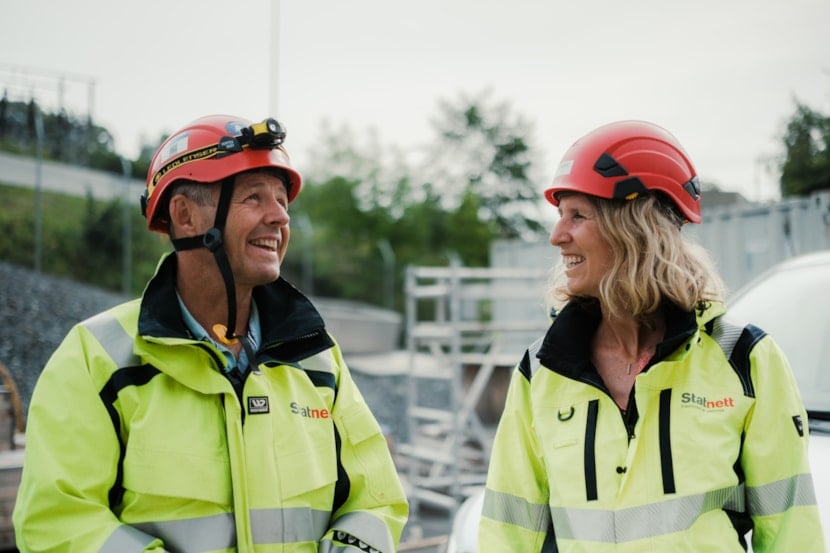- In order to strengthen security of supply and enable the green transition, we are increasing our efforts and pace. The first half of 2024 shows that we are making progress, says CFO and Executive Vice President at Statnett, Cathrine Lund Larsen.
The transition from fossil to renewable energy is happening throughout society. This requires us to increase the capacity of the power grid. Statnett is facilitating the green transition and will invest up to NOK 150 billion over the next ten years.
- Statnett has established an ambitious and forward-looking strategy to be able to deliver on the green transition. At the same time, we operate in a supplier market characterized by high demands from many countries and price increases in several areas. This is challenging for the cost development and completion time in our projects, says Cathrine Lund Larsen.
During the first half of 2024, the number of large and small ongoing projects has increased from about 160 to 210. The ongoing grid portfolio has increased from around NOK 100 billion to NOK 130 billion in the same period.
- We are working to reduce both costs and time in our projects. We are making significant investments in digital infrastructure and new technology. We are also working strategically towards the supplier market and streamlining our own procurement processes. This contributes to an accelerating implementation pace, says Lund Larsen.
Solid underlying result
Statnett has delivered a solid underlying result, increasing to NOK 1,176 million in the first half of 2024. The improvement in the underlying profit is largely attributable to an increase in permitted revenue.
- The underlying profit gives the best reflection of Statnett's financial results. The Norwegian Energy Regulatory Authority (RME) stipulates a cap (permitted revenue) for Statnett's operating revenues, and the underlying profit is based on this, says Lund Larsen.
The Group made an accounting net loss of NOK 314 million in the first half of 2024. Congestion revenues were significantly lower compared to the same period last year due to lower price differences. In recent years, Statnett has paid back a significant portion of the accumulated congestion revenue to customers both through reduced tariffs and extraordinary repayments. As a consequence of a more normalized power situation, Statnett reintroduced the fixed element of the tariff with effect from 1 January 2024.
The Group's operating expenses increased compared to the same period last year. A large portion of the increase is attributable to higher costs relating to Statnett’s initiatives to maintain instantaneous balance in the power system and to ensure satisfactory quality of supply.
Good security of supply
Security of supply in the first half-year has been good. Despite some extreme weather events during the winter, outages were brief, and the power grid proved itself to be robust. A combination of high precipitation and imports of renewable power gave low prices and several hours of negative prices so far this year.
There is a high demand for connection to the power grid. At present we have allocated 8,500 MW to customers that are requesting capacity. Meanwhile, mature projects with need of 4,600 MW are waiting for allocation. Statnett's area plans are important tools for the development of the grid. During 2024, the area plans are to be revised.
- The area plans facilitate close cooperation between grid companies, industry and power producers. When fossil energy is to be replaced with renewable energy on a large scale, we need to increase the capacity of the power grid both within and between regions, explains Lund Larsen.
Changing security landscape
The security situation in Europe has changed, and secure access to energy has never been more important. This is a major driver behind the European energy transition and emphasizes the need for increased cooperation between European stakeholders. To enable the future power system, increased digitalization in the power sector is necessary, but at the same time also a source of increased vulnerability.
- It will be important to coordinate efforts across different sectors to safeguard security of supply and our combined defense capability from a holistic perspective, says Cathrine Lund Larsen.
|
(Amounts in NOK million) |
First half of 2024 |
First half of 2023 |
|---|---|---|
|
Underlying profit |
1 176 |
970 |
|
Total permitted revenue grid operations |
9 223 |
8 204 |
|
Total operating expenses |
7 075 |
6 509 |
|
Recorded profit for the period |
-314 |
-2 539 |
|
Recorded total operating revenue |
7 823 |
4 014 |
|
Congestion revenue |
3 295 |
4 347 |
|
Higher (+)- and lower (-) revenue |
-1 910 |
-4 499 |
|
Accumulated higher revenue at the end of period |
1 981 |
4 779 |
|
Investments |
3 376 |
2 752 |

